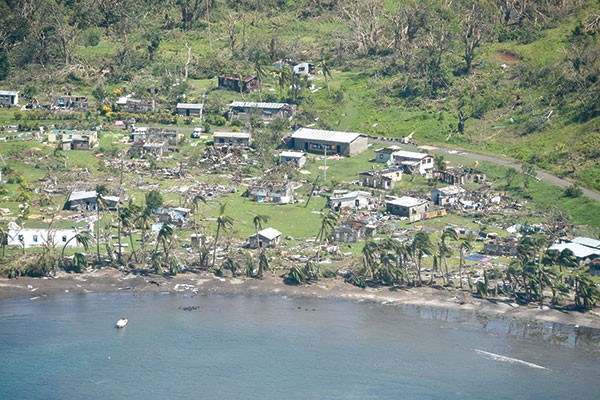The New Zealand Government has sent $2 million in aid relief to Fiji following the destruction caused by a recent tropical cyclone dubbed “Cyclone Winston”. So far Cyclone Winston has killed 42 people, according to latest reports from the BBC, with fears for remote areas and islands yet to be reached by relief teams. The Cyclone made landfall as a category 5 storm, reaching wind speeds up to 320kmh and waves of up to 40ft.
Last week Minister of Foreign Affairs Murray McCully released a press statement confirming New Zealand’s aid contribution to Fiji. The statement announced the further funding of $1.8 million, adding the initial release of $200,000 following the cyclone landfall.
“This evening a New Zealand Defence Force C-130 will depart for Suva carrying relief supplies and a Joint Reconnaissance Team made up of NZDF personnel, and Fire Service and Ministry of Health staff.
“The $1.8 million in funding announced today will take New Zealand’s total contribution to more than $2 million. The funding will be used to support New Zealand non-government organisations working on the ground in Fiji and to respond to requests for technical assistance from the Fiji authorities” Mr McCully says.
The Labour Party Spokesperson for foreign affairs, David Shearer said the response was adequate but what happened next would determine the Government’s effectiveness.
“I think it’s contributed enough originally, I was pleased to see we’re sending up a second C130 yesterday. So getting off the mark fast has been important.
“It’s pretty clear that in the coming few days there’s going to be bigger infrastructure needs that we will need to send a ship up the Pacific for, when Vanuatu’s cyclone occurred, it took two weeks for our ship to leave the dock here in New Zealand, and really what people need is a response faster than that we need to get up there as quickly as we can.
“I think our initial response has been adequate but it’s really going to depend on what we do next and how go forward from here” says Mr Shearer.
The category five cyclone has since been downgraded to a category four following its devastation in Fiji. Initial weather models mapped the cyclone to begin heading west towards Tonga, however recent reports have indicated the storm will likely head south, hitting New Zealand in the North Island in up to a week’s time. Officials have already reassured the public that any damage will marginal in comparison to the significant damage caused in Fiji.
Cyclones are characterised by low-pressure areas, with the centre of the cyclone commonly referred to as the ‘eye.’ The six requirements necessary for cyclones to form are warm sea surface temperatures, atmospheric instability, high humidity in the lower to middle levels of the troposphere, enough Coriolis force to develop a low pressure centre, a preexisting low level focus or disturbance, and a low vertical wind gradient.



